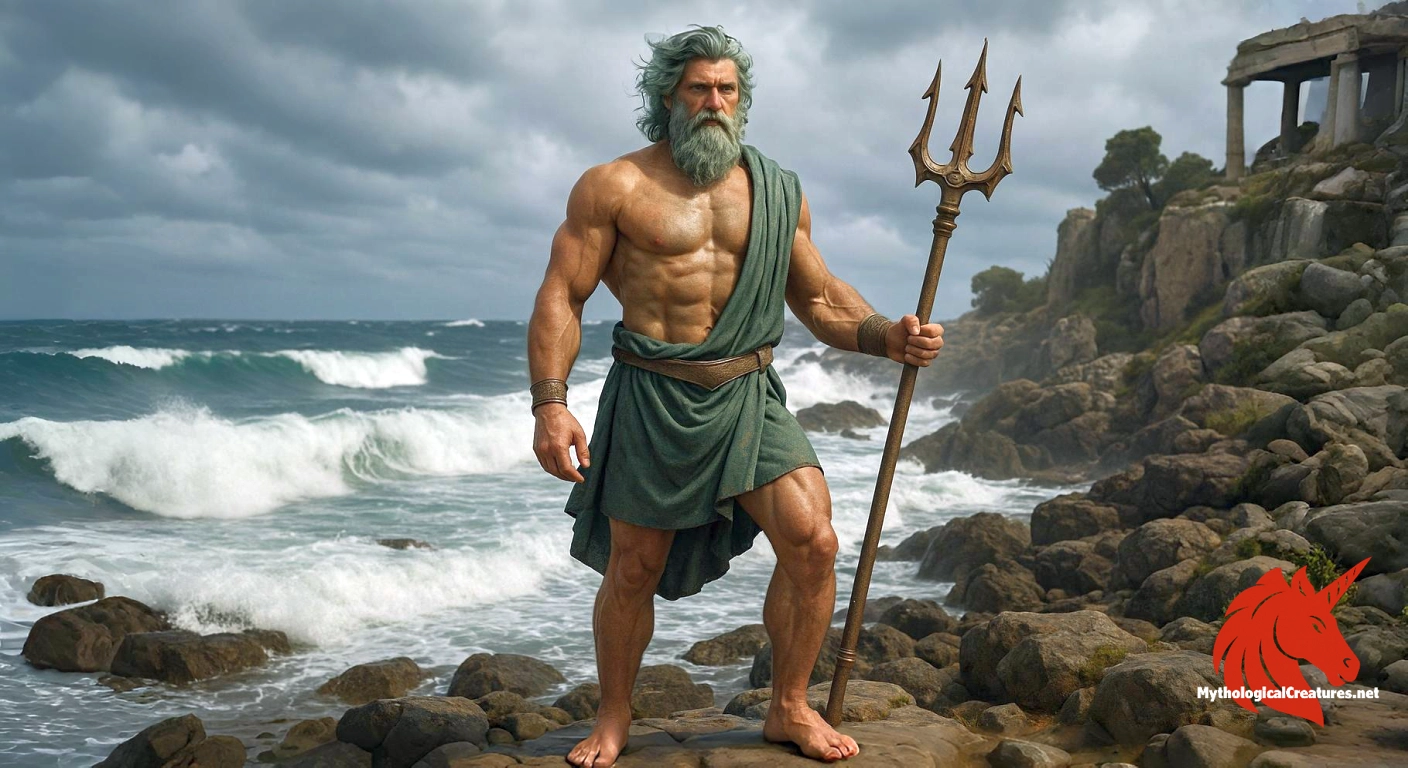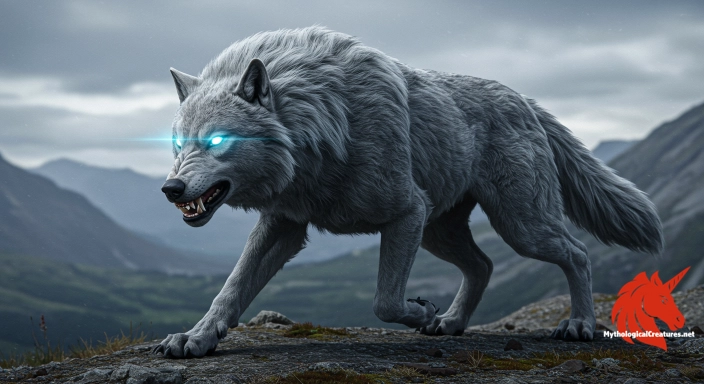Poseidon: Poseidon is the ancient Greek god of the sea, storms, earthquakes, and horses.

Poseidon
Poseidon - A major Olympian deity revered for his control over the sea and his influential role in Greek culture and city patronage
Origins & First Encounters
Poseidon stands as one of the most formidable and enigmatic Olympian deities, whose legendary authority over the sea, storms, earthquakes, and horses has captivated cultures since ancient times. Born into a pantheon of divine figures during the early Bronze Age, his veneration in places like Pylos and Thebes underscores his primordial importance before the full establishment of the Olympian order. His mythic origin, emerging from the turbulent narratives surrounding Cronus and his siblings, imbued him with an aura of both benevolence and ferocity. The god’s role as an indispensable protector of seafarers and cities alike highlights a profound cultural reliance on his favour, even as his temper could bring calamity. His epithet as the 'earth shaker' reflects not only his seismic reach over the natural world but also the deeply felt power of the forces he commands. Ancient societies celebrated him through ritual and art, solidifying his place as a guardian of both life and nature’s unpredictable moods. His enduring portrayal in literature and public worship transcends mere myth, serving as a living symbol of the elemental dynamics intrinsic to the world. Through centuries of reinterpretation, Poseidon remains a central figure, mirroring the human quest to understand and harness the potent energies of nature.
Source Texts & Tale Variants
Ancient texts form the backbone of Poseidon’s rich narrative, with epic poems by Homer and Hesiod painting a vivid picture of his dual nature as both benefactor and avenger. His deeds are immortalised in the Iliad, where his interventions sway the tides of battle, and in the Odyssey, where his wrath becomes the bane of mortal endeavour. A dedicated Homeric hymn further embellishes his myth, celebrating his power over the sea with lyrical reverence. Plato’s dialogues in Timaeus and Critias offer a philosophical nod to his role as ruler of mythical Atlantis, linking him with broader cosmological themes. Beyond the literary canon, inscriptions, vase paintings, and temple reliefs provide fragmented yet compelling variations of his story. Localised cult practices infused his legend with additional layers, sometimes merging his identity with regional deities or natural phenomena. Oral traditions, passed down through generations, have also contributed subtle, alternative narratives that continue to enrich his mythos. Collectively, these sources reveal a deity whose multifaceted character has been interpreted in numerous ways, reflecting the dynamic interplay between regional traditions and pan-Hellenic ideals.
Form & Powers
In classical art, Poseidon is typically portrayed as a towering and robust figure whose physical presence epitomises divine strength and authority. His visage, often rendered with a well-groomed flowing beard and windswept hair, evokes the tumult of the ocean he commands. The deep-set, piercing eyes that adorn his face are said to mirror the unfathomable depths of the sea, imbuing him with an air of both mystery and gravitas. Central to his iconography is the trident, a three-pronged spear that symbolises his mastery over both water and the shifting earth. Sculptures and coins depict him with a muscular build and dynamic posture that suggest not only power but also the ceaseless movement of the tides. In many representations, his attire is minimal, allowing the emphasis to remain on his indomitable physique and elemental connection. Occasional depictions include associations with equine imagery, where the presence of horses reinforces his reputed role as a tamer of these spirited creatures. The varied artistic portrayals consistently highlight a physical embodiment of nature’s dual capacity for creation and destruction.
Regional Faces
The worship of Poseidon exhibits notable regional variations, each reflecting local environmental concerns and cultural practices. In coastal communities along the Aegean and Ionian seas, he was chiefly revered as the sovereign of the ocean, whose capricious moods could determine the fortunes of maritime trade and travel. Inland, particularly in regions such as Arcadia, his character was intertwined with that of a pastoral deity, celebrating his founding role in horse cultivation and agrarian fertility. Localised festivals and rituals often emphasised his aspect as the 'earth shaker,' where ceremonies were designed both to honour his bounty and to placate his destructive potential. In some areas, his myth was adapted to incorporate local legends, creating hybrid forms that merged maritime dominion with terrestrial guardianship. Artistic expressions in different regions frequently reveal subtle variations, sometimes portraying him in a more benevolent light or, conversely, accentuating his tempestuous character. These regional adaptations catered to the specific needs and experiences of diverse communities, ensuring that his authority remained both relevant and revered. In essence, the multifaceted regional depictions of Poseidon underscore his universal appeal and the adaptability of his myth to varied cultural landscapes.
Cultural Parallels
The figure of Poseidon invites intriguing comparisons with other cultural deities who similarly embody the primal forces of nature. His Roman counterpart, Neptune, while sharing many attributes, was sometimes depicted with a softer aspect that underscored state power and maritime prosperity. Across the ancient Near East, deities overseeing the chaotic primordial waters echo Poseidon’s dominion over the elemental, emphasising a near-universal human reverence for the sea. In Norse mythology, gods associated with storms and the deep also mirror the formidable blend of beauty and terror inherent in Poseidon’s character. Celtic and Slavic traditions similarly possess legendary figures whose control over water and earth reflects a shared celebration of nature’s dual capacities for nurture and destruction. This cross-cultural dialogue highlights a recurring mythological theme: the personification of untamed natural forces as divine entities. Artistic and literary motifs connect these deities through their symbolic tridents, tempestuous demeanours, and protective roles in society. Thus, Poseidon’s myth not only anchors the Greek pantheon but also resonates with a wider, global tradition of venerating the powerful spirit of the natural world.
Legacy & Modern Evolution
Over the centuries, the myth of Poseidon has evolved remarkably, reflecting shifts in cultural attitudes and artistic styles while retaining the core essence of his divine power. In classical antiquity, he was revered as a deity whose might over the sea and earth could command both awe and fear, a balance that has continued to intrigue successive generations. His absorption into Roman culture as Neptune allowed his image to be reinterpreted for new societal and political contexts, blending heavy symbolism with evolving artistic expression. The Renaissance witnessed a revival of his image, as painters, sculptors, and writers rediscovered and reimagined the ancient myths with renewed vigour. Contemporary media, ranging from films to novels, has further cemented his legacy as a symbol of both natural beauty and the formidable forces of nature. Modern reinterpretations often explore the environmental and psychological dimensions of his myth, highlighting the timeless tension between human control and nature’s unpredictability. Exhibitions, literature, and academic discourse continue to draw on his powerful imagery to comment on current ecological and cultural challenges. Consequently, Poseidon remains a dynamic figure whose enduring legacy transcends ancient myth, continuing to inspire and provoke reflection in our modern world.
Interesting Fact
An interesting observation about Poseidon is that his dual role as protector and punisher reflects the ancient Greek understanding of nature's both benevolent and perilous aspects.
Quick Creature Info
Origin:
Associations:
Our Mythic Legendary Rating:

Also Sometimes Known As:
Habitat:
Supernatural Powers:
Physical Attributes:
Abilities:
Behavior:
Weaknesses:
Lore:
References
Discover Another Mythical Legend You May Not Have Heard Of?
Uncover the mysteries of ancient folklore and expand your knowledge of legendary beings from cultures around the world.
Dare to Meet the Sköll....
Mythical Disclaimer: The images and data on this site are derived from various historical and literary sources, but we have found that many myths often have multiple versions and interpretations across references, sometimes contradictory. As a result, these creature depictions are artistic interpretations—imaginative blends of folklore, legend, and a dash of AI guesswork. Because creature descriptions vary widely, our illustrations and accompanying information represent our best effort to honor mythology while bridging creative gaps. Enjoy these interpretations—just remember, we've done our best to respect the stories and validate available data, but in the realm of mythology, details often shift, imagination leads the way, and nothing is ever set in stone!
Curated by the Mythological Creatures Team (rev. May 2025)
